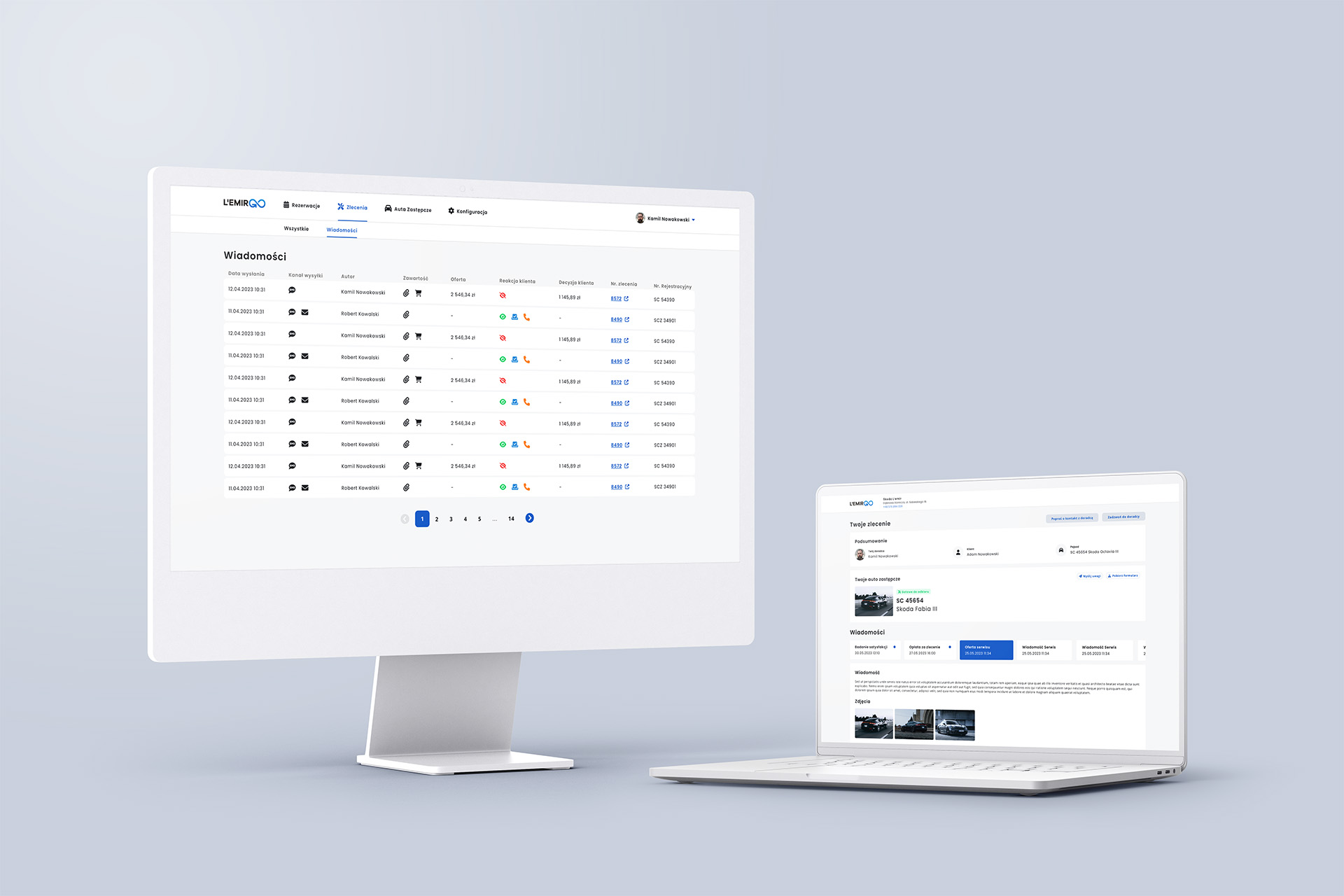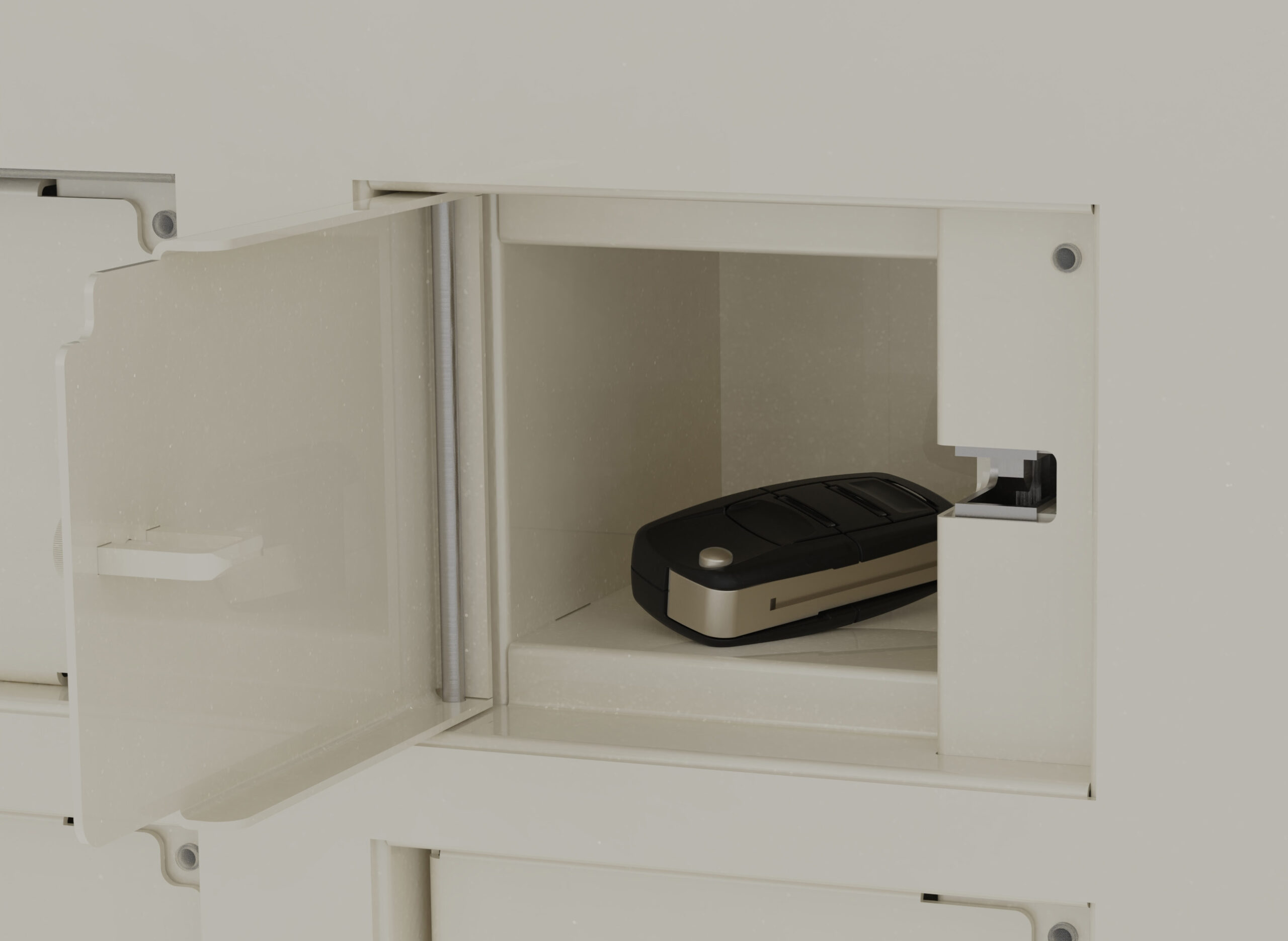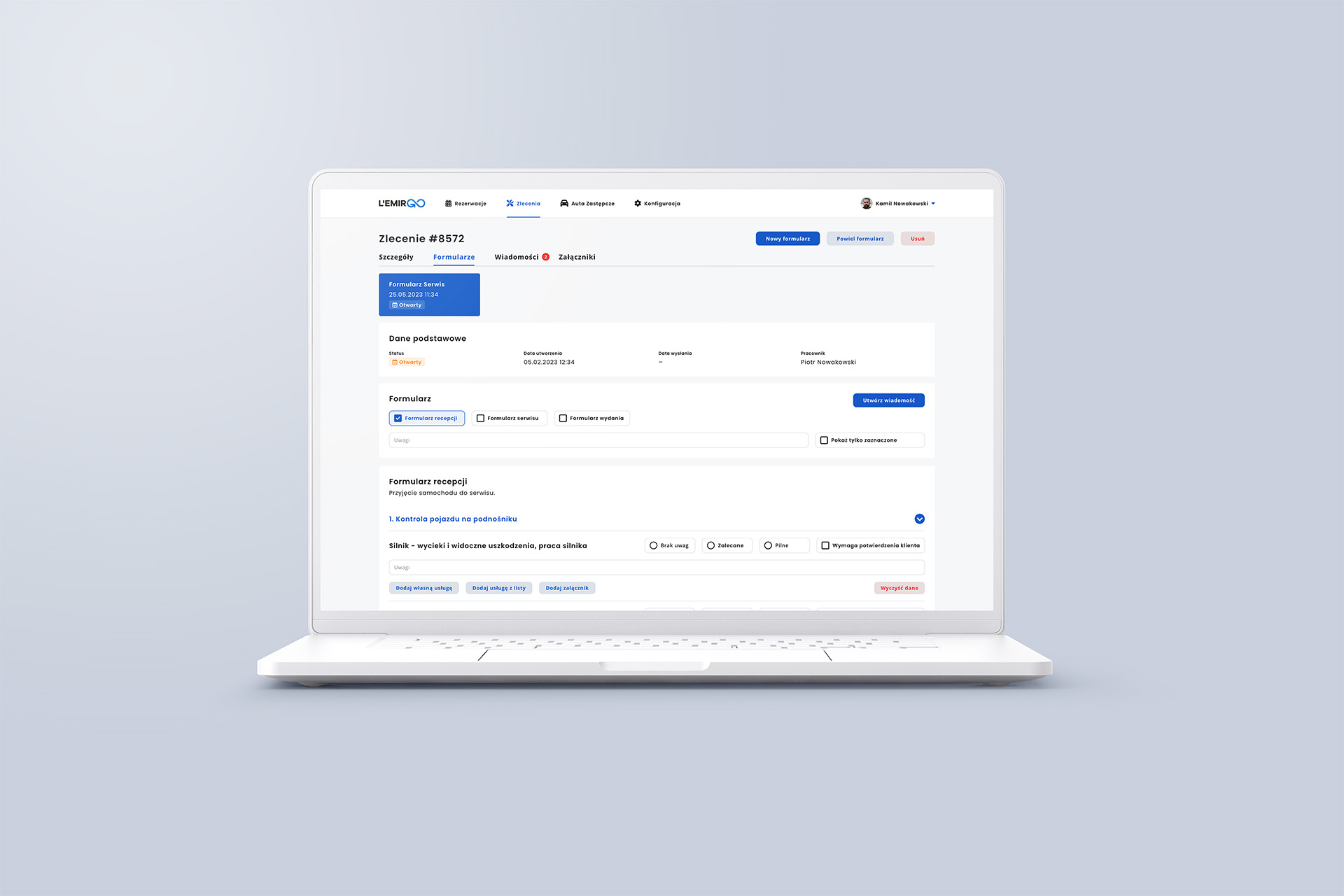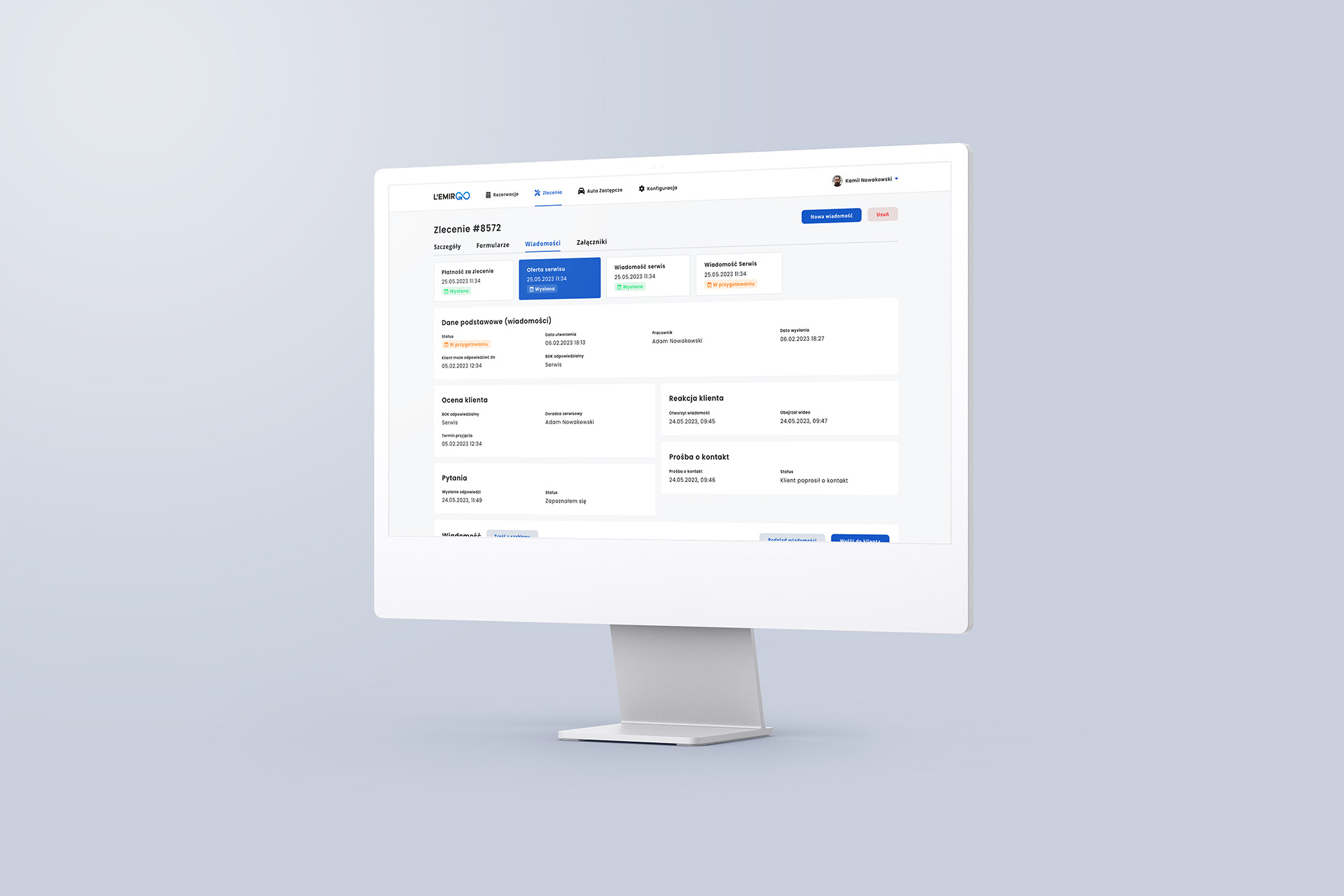Skoda L’emir Go
Key management software for Skoda car dealerships
How to automate key management in a car dealership, integrate software with a specially designed physical box, and ensure the safety and reliability of such a solution? Discover the case study of our client, L’emir Sp. z o.o., and the story behind the creation of the “key management system”.
Introduction
The client approached us with a project to create a “key management system,” aimed at relieving advisors and staff at the car dealership. With this device, a box equipped with 32 compartments and a screen placed at the entrance to the dealership, advisors would not need to meet clients in person to hand over keys. This way, keys could be transferred efficiently, contactlessly, and at any time of the day or night.
This solution was not new to the client’s company. By the time they approached us, they already had a ready and functioning production solution. However, managing the product from an organizational perspective was problematic – the system was developed by two companies that did not collaborate with each other. The client wanted a single provider to implement the new device, handling the project from A to Z. They also wanted the new technology partner to enhance the solution with their own experience and ideas, propose new functionalities, and design infrastructure that would improve customer and order management. Given our extensive experience in projects that integrate software with physical devices, we were their first choice.



Source: https://saik.pl/
Project Progress
Since the project’s objectives were not clearly defined at the start, we began working with the client through workshops that helped us establish the main direction and prepare a project backlog divided into sprints.
The biggest challenge from the beginning was working with the physical cabinet, which was produced by an external company. It turned out that the new cabinet we received differed from the one the client had been using and on which we based our solution. The supplier had made changes to the software and equipped the device with different sensors, forcing us to make modifications to the project.
Furthermore, during the initial phases, the cabinet was located in our office, and we had physical access to it. Unfortunately, it was only loaned to us for a certain period – in later stages of the project, we had to manage without it, which introduced a risk of errors. We found a solution: we created a virtual simulator for the cabinet, which, paradoxically, improved our work on the project. This allowed all team members to use the cabinet simultaneously and quickly integrate and deploy new functionalities.
Additionally, during the project’s execution, we regularly conducted user flow analyses to properly plan processes within the solution. We aimed to analyze, predict, and address many potential, including unusual, user behavior scenarios, such as placing items other than keys in the cabinet or the need to reopen the cabinet after it had been closed. Considering all possible event scenarios and planning seemingly simple processes proved to be a significant challenge. However, we managed to meet this challenge and find solutions for the vast majority of scenarios.

Technologies
The project took about 6 months to complete using .NET, MSSQL, and Vue.js technologies. In total, the project involved two back-end developers, two front-end developers, a full-stack developer, a tester, an analyst, and a DevOps specialist.
We worked on the solution independently, with relatively minimal client involvement in daily tasks. Therefore, we felt particularly responsible for the final result and had to demonstrate significant creativity in designing the solution and anticipating user behavior.

Outcome
Although the project is not yet complete, we have successfully concluded its key phases and delivered the most prioritized functionalities. We built a system consisting of three components: an application for salon employees, an application for customers, and a module for managing the key display unit.
The solution we created provides:
- Efficient key transfer within the box
- Optimized customer service process management
- Option to provide feedback after vehicle pickup directly on the device
- Tracking of order history
- Ability to log in to the system and check order status
- Preparation of customer and upsell offers
- Customer satisfaction surveysEvaluation of advisors’ performance
- Advanced reporting module
- Monitoring of advisors’ work and workload
- Capability to make reservations and additional service requests
- Option to order a replacement vehicle
- Integration with the car station and the salon’s internal system.
The new system has also resolved several issues, such as customers reserving boxes but not using them. We have integrated it with various external applications, including SMS and email operators, payment systems, and identity and driver’s license verification systems.
One of the most significant advantages of the solution is that it handles all customer service processes without the need to connect to external systems, as was required previously. This means the client can use a single, cohesive, and integrated system without relying on additional vendors.
The project is currently in the final testing phase before the old system is fully replaced by the new solution. We are also planning further development of the product with the client, including adding functionality for transferring purchased products via boxes. The client also wishes for the solution to be installable in other car dealerships, enabling its further sale and implementation. Additionally, the client plans to develop another product with our involvement.
Would you like to learn more or are you interested in a similar implementation? Contact us—we’ll schedule a no-obligation consultation to discuss your project and propose our solutions.
Are you interested in realizing a similar project?
Tell us what you need – our experts will tell you how to do it, how much it costs, and when it will be ready.